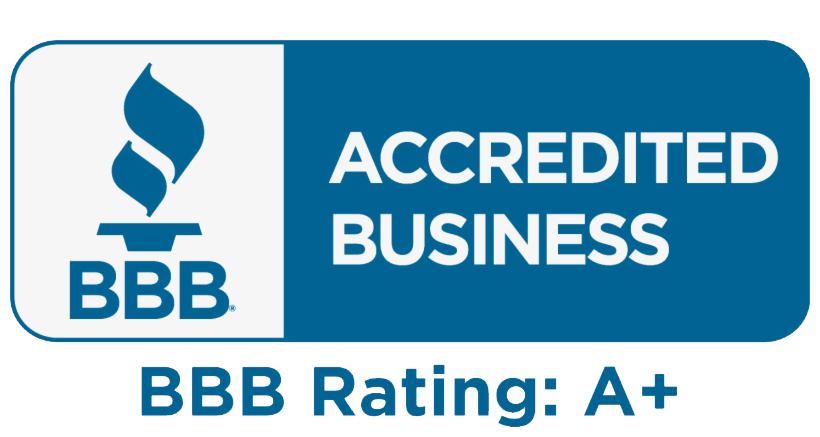Blog

How Often to Clean Your Chimney: A Guide to Maintenance and Window Replacement
For many homeowners, the cozy warmth of a fireplace is one of the best parts of winter. However, maintaining a chimney is an essential part of keeping your home safe. If you’ve ever wondered, how often should I clean my chimney?, you’re not alone. Regular chimney cleaning is vital for preventing chimney fires, ensuring proper ventilation, and extending the life of your chimney.
In this blog, we’ll dive into how frequently you should clean your chimney, what factors influence that timeline, and the importance of hiring a professional chimney sweep, along with related upgrades like window replacement to boost your home’s comfort and efficiency.. Whether you’re new to having a fireplace or just looking to brush up on chimney care, this guide has you covered.
Window Replacement: Complement Your Fireplace with Energy-Efficient Solutions
While keeping your chimney in top shape, consider upgrading your home with window replacement. Installing energy-efficient windows enhances your home's insulation, allowing your fireplace to heat your space more effectively. Plus, modern windows can elevate your home’s aesthetic and reduce energy bills.
Pairing a clean chimney with high-quality windows ensures your home is cozy, safe, and energy-efficient year-round.
Why is Chimney Cleaning Important?
Before answering how often you should clean your chimney, let’s first understand why it’s necessary. Over time, chimneys accumulate a substance called creosote, a byproduct of burning wood. Creosote is highly flammable, and if it builds up, it can lead to dangerous chimney fires. In fact, the National Fire Protection Association (NFPA) reports that creosote buildup is a leading cause of chimney fires in the U.S.
A blocked or dirty chimney can also affect the airflow, preventing dangerous gases like carbon monoxide from escaping your home. Regular chimney cleaning ensures that your fireplace functions safely and efficiently.
Real-Life Example: A friend of mine hadn’t cleaned their chimney for several years and started noticing smoke backing up into their home. After calling in a professional chimney sweep, they discovered the chimney was nearly blocked by creosote, posing a serious fire risk. Fortunately, the issue was resolved before any damage occurred.
How Often Should You Clean Your Chimney?
The general rule of thumb is to have your chimney cleaned and inspected at least once a year. This annual cleaning is a recommendation from both the NFPA and the Chimney Safety Institute of America (CSIA). However, the frequency may vary based on several factors.
1. How Often You Use Your Fireplace
If you use your fireplace regularly during the winter, you may need to clean your chimney more frequently than someone who only uses it occasionally.
- Frequent Use: If you light fires daily or multiple times a week, creosote buildup can happen quickly, requiring cleaning every 6 months.
- Occasional Use: For homeowners who only use their fireplace a few times a season, an annual cleaning should suffice.
Pro Tip: If you use your chimney regularly, consider mid-season checks to assess the level of creosote buildup.
2. Type of Wood Burned
The kind of wood you burn plays a significant role in how quickly creosote accumulates. Hardwood, such as oak or maple, burns hotter and cleaner, producing less creosote. Softwood, like pine, burns faster and tends to create more creosote buildup.
- Burning Softwood: If you burn softwoods, you may need to clean your chimney twice a year due to the increased creosote production.
- Burning Hardwood: Hardwood produces less creosote and may only require annual cleaning if you follow proper burning techniques.
Expert Insight: “Avoid burning wet or unseasoned wood, as it produces more smoke and accelerates creosote buildup. Dry, seasoned wood burns more efficiently and helps keep your chimney cleaner,” advises certified chimney sweep Michael Jennings.
3. Type of Fireplace or Stove
The type of fireplace or wood-burning stove you have can also influence how often you should clean your chimney.
- Open Fireplaces: Open fireplaces typically create more creosote than modern, efficient stoves. If you have an open fireplace, stick to the annual or bi-annual cleaning schedule.
- Wood-Burning Stoves: Modern, EPA-certified wood stoves burn wood more efficiently, leading to less creosote accumulation. However, they still require yearly cleanings to ensure safe operation.
4. Chimney Structure
If you have a traditional masonry chimney, it may need more frequent inspections and cleaning compared to a newer metal or prefabricated chimney. Older chimneys with cracks or damage can accumulate debris and creosote more quickly.
- Older Chimneys: If your chimney is older or hasn’t been updated in years, a twice-yearly inspection and cleaning might be necessary.
- Newer Chimneys: Newer chimneys built to modern safety codes may only require an annual cleaning.
Signs That Your Chimney Needs Cleaning
While the guidelines above are helpful, knowing the signs of a dirty or clogged chimney can help you take action before it becomes a fire hazard. Here are a few warning signs that your chimney needs attention:
1. Burning Smell
If you notice a strong, acrid smell when your fireplace is in use, it’s likely due to creosote buildup. The smell of burning creosote can be a sign that your chimney needs immediate cleaning.
2. Excessive Smoke
If smoke is backing up into your home rather than escaping through the chimney, this is a clear indication of a blockage or improper ventilation. While creosote is a common culprit, debris like bird nests or leaves can also cause airflow issues.
3. Soot or Creosote Buildup
Look inside the fireplace or chimney. If you notice thick, black soot or tar-like creosote buildup, it’s time for a chimney cleaning. Creosote buildup can appear as a flaky, sticky, or hardened residue and should never be ignored.
4. Slow to Light Fires
If you find that it’s harder to light a fire or keep it burning, the issue could be restricted airflow from a dirty chimney. This makes it harder for oxygen to reach the fire, resulting in weak or inconsistent flames.
Why Hire a Professional Chimney Sweep?
While there are DIY options for chimney cleaning, hiring a professional chimney sweep is highly recommended. Certified professionals have the experience and tools necessary to clean and inspect your chimney thoroughly, ensuring it is safe for use.
1. Thorough Cleaning
A professional chimney sweep will clean not only the visible parts of the chimney but also deeper sections that are hard to reach. This includes cleaning the chimney liner, damper, and smoke chamber.
2. Safety Inspection
During the cleaning process, a chimney sweep will inspect your chimney for cracks, leaks, or structural damage. Catching these issues early can prevent costly repairs and keep your chimney functioning safely.
3. Proper Equipment
Chimney sweeps use specialized tools like brushes, vacuums, and cameras to thoroughly clean and inspect your chimney. They also have the expertise to handle difficult or dangerous situations, like removing animal nests or clearing severe blockages.
Expert Insight: “Chimney cleaning isn’t just about sweeping out the soot. We inspect for any potential hazards like cracks in the liner or obstructions that could lead to carbon monoxide poisoning,” explains Rachel Harris, a certified chimney technician with over 15 years of experience.
Can You Clean Your Chimney Yourself?
While DIY chimney cleaning is possible with the right tools, it’s a more complex and potentially dangerous job than it might seem. Here are some considerations if you’re thinking of cleaning your chimney yourself:
1. Required Tools
To clean a chimney properly, you’ll need a chimney brush, extension rods, a vacuum, and protective gear like goggles and a mask. These tools can be rented or purchased but require some experience to use effectively.
2. Height and Safety Concerns
Climbing onto your roof to clean the chimney is risky, especially for multi-story homes. Without the proper safety precautions, you could be putting yourself in danger. This is why many homeowners choose to hire a professional.
3. Limited Inspection Abilities
While you may be able to remove some soot and creosote yourself, you likely won’t have the tools or expertise to inspect the deeper parts of the chimney. This means hidden damage or blockages could go unnoticed.
Conclusion: How Often Should You Clean Your Chimney?
So, how often should you clean your chimney? The simple answer is at least once a year, but depending on how often you use your fireplace, the type of wood you burn, and the condition of your chimney, you may need more frequent cleanings. Regular chimney maintenance not only keeps your fireplace operating efficiently but also prevents dangerous chimney fires and carbon monoxide buildup.
Hiring a professional chimney sweep ensures that your chimney is cleaned thoroughly and inspected for any potential issues. By staying on top of chimney maintenance, you’ll enjoy the warmth and comfort of your fireplace for years to come without worrying about safety hazards.
If you’re overdue for a chimney cleaning, don’t wait—schedule a professional chimney sweep today!








